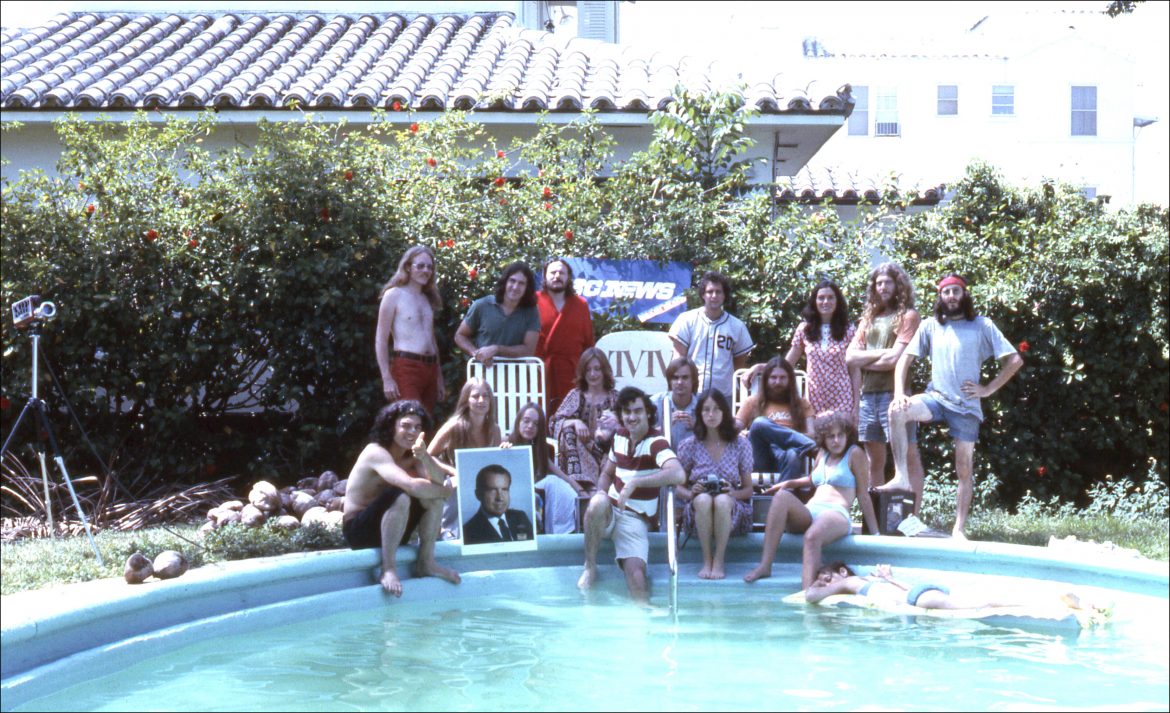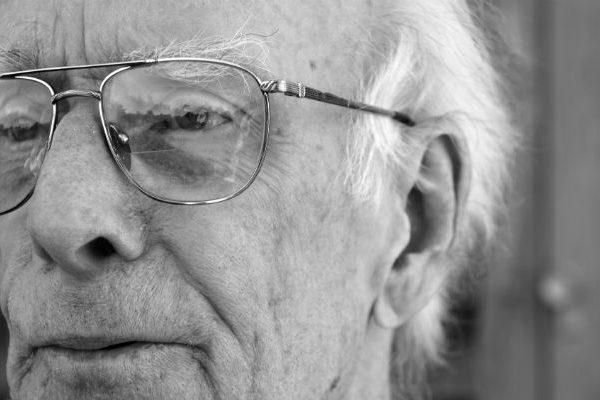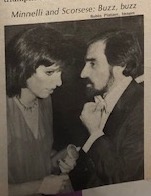Original Publication: Rolling Stone – July 20, 1972
Guerrilla video: Days of Tape at the Conventions
San Francisco – “We just got a thousand from Teleprompter,” announced Michael Shamberg, hanging up the phone. Shamberg, author of Guerrilla Television, the 1971 paperback and member of Raindance, the New York video commune, has been hustling money around the country for the most ambitious project yet attempted by alternative TV – high quality, grass roots coverage of the upcoming Democratic and Republican conventions at Miami Beach.
Allen Rucker of Ant Farm, a media-oriented commune in San Francisco, Megan Williams of Raindance, and Shamberg have organized Top Value Television (TVTV), a coalition of 24 experienced video guerrillas, including a political analyst from the Brookings Institution in Washington and a filmmaker from the America Film Institute in Los Angeles. By using half-inch videotape, a medium almost anyone can master, the group plans to provide convention coverage radically different from conventional television’s. Some of the largest CATV (cable) systems in the country are not only supporting Top Value TV but giving them money to work with.
“We’re not attempting four-day live coverage of each event,” said Williams. “But by showing our equipment and ourselves – by putting our own lifestyle into the programs we make – we’ll show the average guy who watches broadcast TV there’s more than one kind of video.”
The result will be two 90-minute “video verite” documentaries to be aired after each convention. Top Value, which operates out of a rental house in Miami Beach, is one of a hundred officially accredited non-network television groups from around the world who have been given access to the convention floors on a revolving basis.
Teleprompter, the nation’s largest CATV system, and Sterling Manhattan CATV and Cypress Communications of Los Angeles which all have agreed to buy finished tapes with the option to air them. The three systems reach more than one million cable subscribers – about 20 percent of the current US CATV market – potentially the largest audience ever to view a program produced by alternative TV.
Last March the Federal Communications Commission issued broad new regulations regarding CATV which specifically endorsed and encouraged half-inch video. (Regular television is limited by FCC regulations to using two-inch videotape, creating the necessity for larger and more costly equipment. Most cable systems use one-inch but also have the capability to use half-inch.) As a result of the rulings, CATV systems are considering alternatives to broadcast television, and some have apparently decided they’ve got nothing to lose by giving the video freaks a chance.
“Cable TV knows it will never succeed if it becomes a copycat to regular broadcast television,” said Rucker. “So the hip ones can afford to encourage us. We’re doing a lot of their research and development for them.”
Top Value TV does not intend to compete directly with the Big Three networks – ABC, CBS, and NBC. Instead, Top Value plans to demonstrate the potential of decentralized video technology.
And since the two conventions lend themselves to the concept of “video happenings,” Top Value figures Miami is a made-to-order place to start presenting alternatives to network television.
“Our equipment allows us to approach events more as participants than threatening or dictating TV crews,” said Rucker. “This means our finished tapes will emphasize informal, unstaged interaction between people who may be totally unaware of our presence.”
“You know the cover of the new Stones’ album, Exile on Main Street?” Shamberg interjected. “Stylistically, that’s the look we’re aiming for.”
To achieve that look, Top Value is equipped with specially modified portapaks about the size of cigar boxes, needing only the equivalent light of a 60 watt bulb. (There will be more than a million watts blazing in the convention hall for network coverage.)
It’s counter-technology at work. Raindance took a vidicon tube originally designed for military surveillance and adapted it to the porta-pak, giving the machine the ability to pick up images even in poorly lit areas.
Top Value will focus a sizable amount of coverage on how the networks cover the convention, hoping to show how television influences events.
“We’ll shoot the networks shooting us,” says Rucker. “We’ll show the theater involved, their staged events. We’ll loop broadcast TV back onto itself.”
Unlike the networks, which are spending $22 million on convention coverage, employing hundreds of cameras, thousands of people (Walter Cronkite’s glass box above the hall costs between ($75 — 100,000), Top Value’s budget is between $16 — 18,000. That sum is supposed to cover 180 minutes of programming, tape, equipment, two trips to New York for final editing onto one-inch tape, transportation, living expenses and salaries (mostly deferred) of those involved. The money has come from the cable systems, progressive foundations, obscure millionaires and a few people in the entertainment business.
A man who owns an ABC-TV affiliate in Texas gave Top Value $500. Then as an afterthought, he drawled, “Say would you all like to air your program on my station?” They certainly would.
This article is typed from the original material. Please excuse any errors that have escaped final proofreading.




No Comments